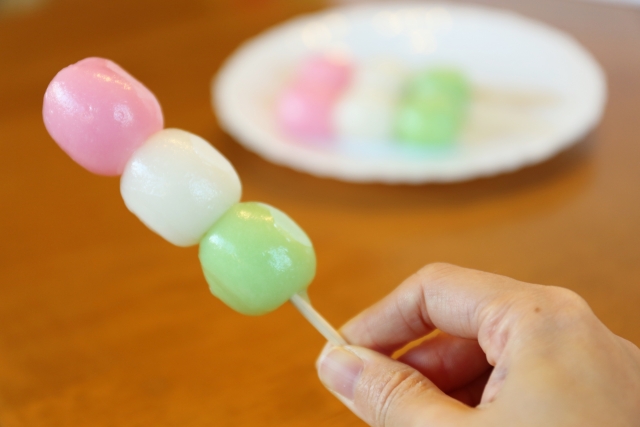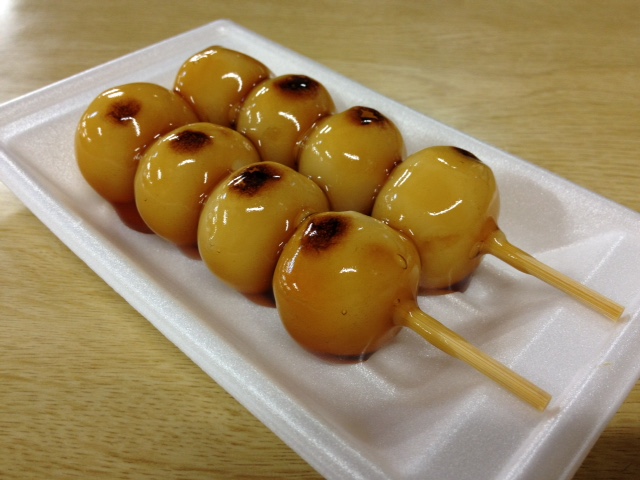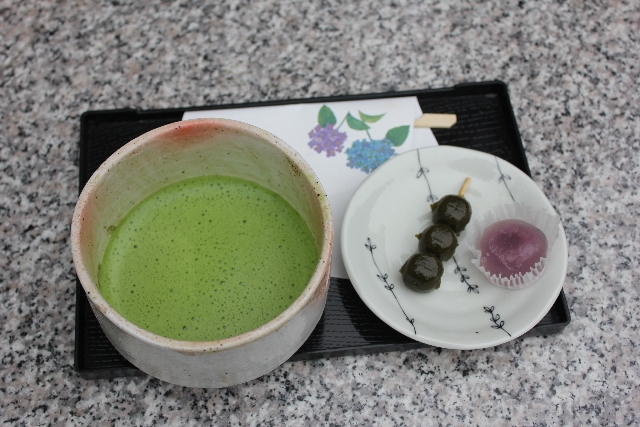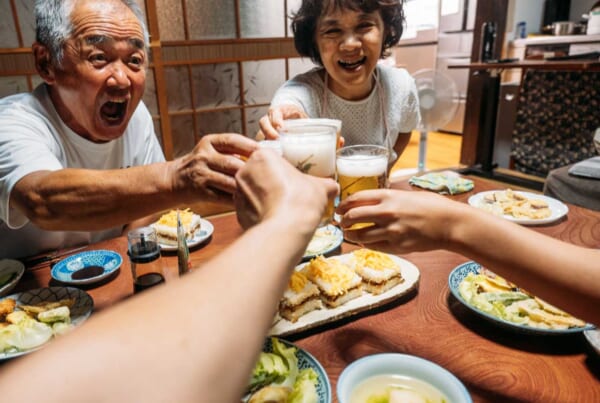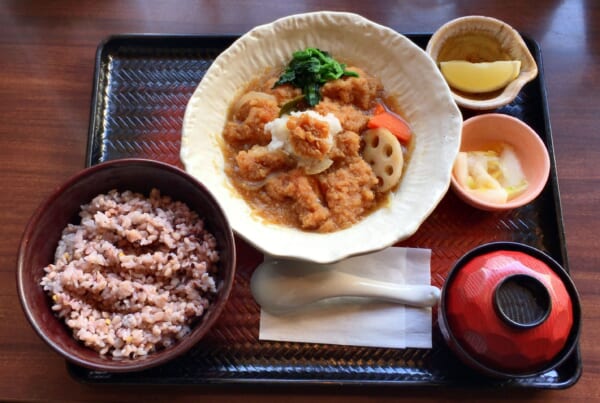Dango is, undoubtedly, one of Japan’s most popular and traditional sweets. It is a mochi-like sweet made from crushed rice and comes in a variety of forms with the most famous being Kibi-dango and Mitarashi-dango. It is the preferred sweet used in many traditional tales of Japan!
Commonly referred to as a Japanese dumplings, dango are shaped into small balls and usually skewered on wooden sticks 4 or 5 at a time. They can be found at convenience stores and supermarkets throughout Japan in their a variety of forms and make for a relatively cheap sweet on the road.
Kibi-dango is probably the most famous member of the dango sweet family as every Japanese kid will grow up learning about this sweet candy-like type of dango. This particular dango sweet is featured in the famous Japanese tale Peach Boy (Momo Taro) about a boy born from a peach who travels across Japan handing out his prized pouch of kibi-dango to various animals to enlist their aid on his adventure.
Dango have also been the sweet subject in a very traditional Japanese proverb that provides some cultural insight into Japan. The proverb goes: “Dumplings rather than flowers” (“Hana yori dango”) and basically means that practical things are actually more important than aesthetics!
Mitarashi-dango are especially popular sweet treats to buy throughout Japan at festivals where they will be readily available from stalls. When purchased from stalls at festivals you can often enjoy watching the rice balls dipped or brushed with the sauce that makes mitarashi-dango, or the topping of your choice! Making for especially exciting video memories of a trip to Japan.
The dango at festivals are especially fresh but, even better, they offer you a unique taste very different from those offered in stores which are usually refrigerated and sold cold. At festivals, to the contrary, the dango sweet is usually roasted on the spot until their outsides turn a light brown. If you get the chance to see this dango sweet being cooked you might compare it to cooking marshmallows! So ultimately, dango are pretty much Japan’s healthier version of the sugary marshmallows popular around the world.
Popular with children and adults alike, dango aren’t something to tire of with age, and it would be great for you to get a taste of their delights while in Japan. So be sure to hunt this dango sweet down at either a store or a festival and taste one essence of Japan!


